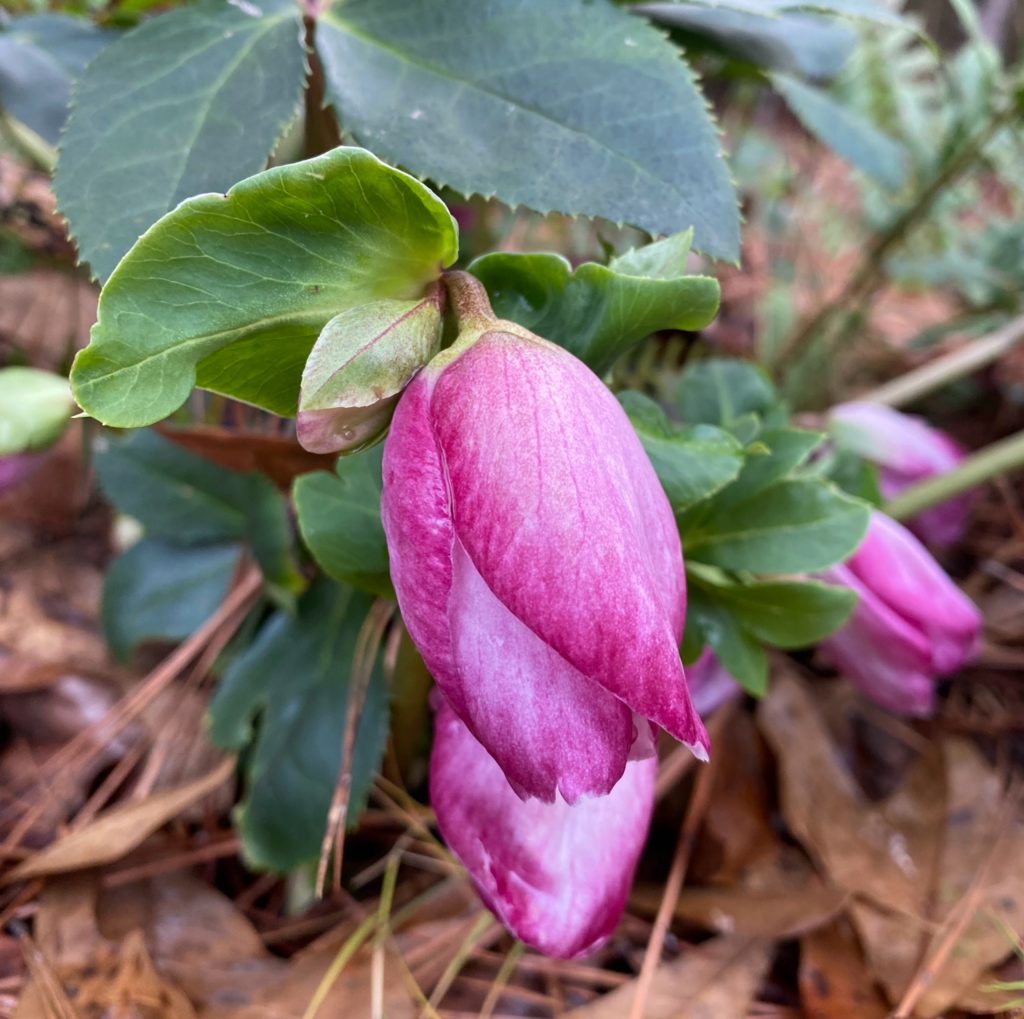
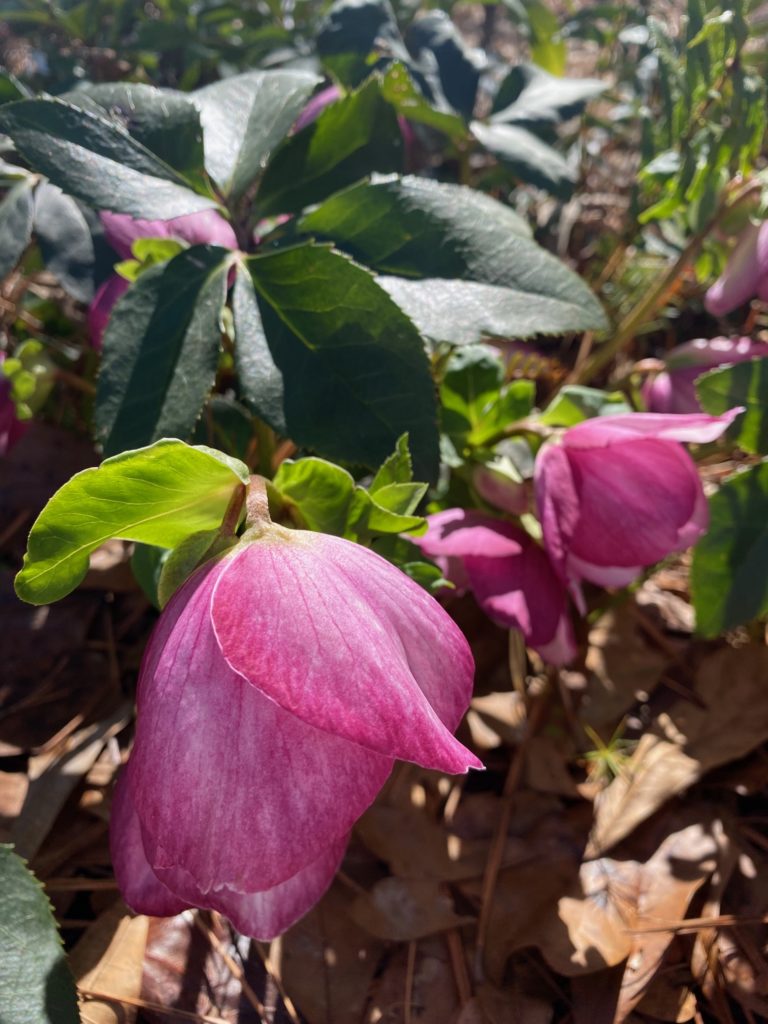
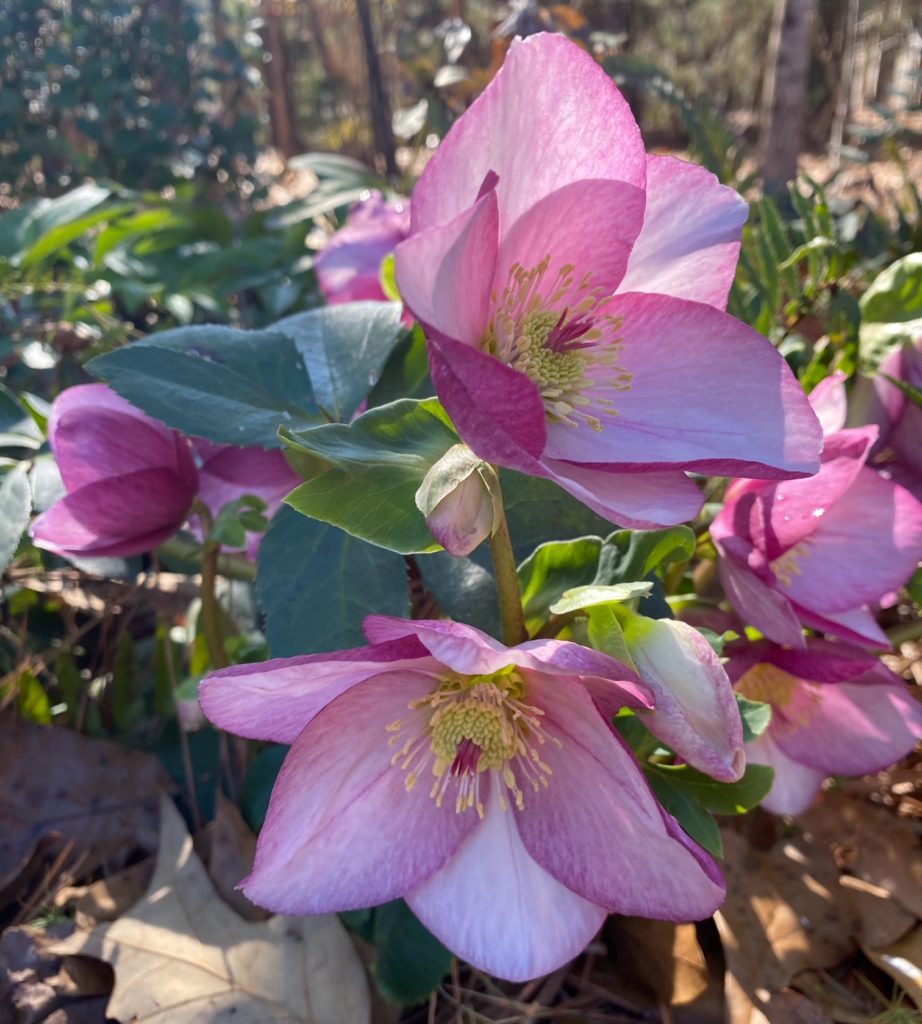
The glittering holiday evenings are over and January marks the beginning of the long wait for spring for those of us that love to garden. This is the month that I tell myself not to think about anything garden-related. I don’t need to lie awake at 4 a.m. debating about what to plant in that tricky spot in dry shade, or wondering why a new shrub is looking sad, something that happens far too often in spring and summer. I am, admittedly, a little garden obsessed for most of the year.
This month I remind myself to read another book, to make soup, to light candles, to enjoy the quiet and the coziness as night falls each evening. Subconsciously though, I’m already counting the weeks until late February, when I’ll begin to see the green tips of bulbs emerging from the leaf litter. Then I can exhale. Spring is coming.
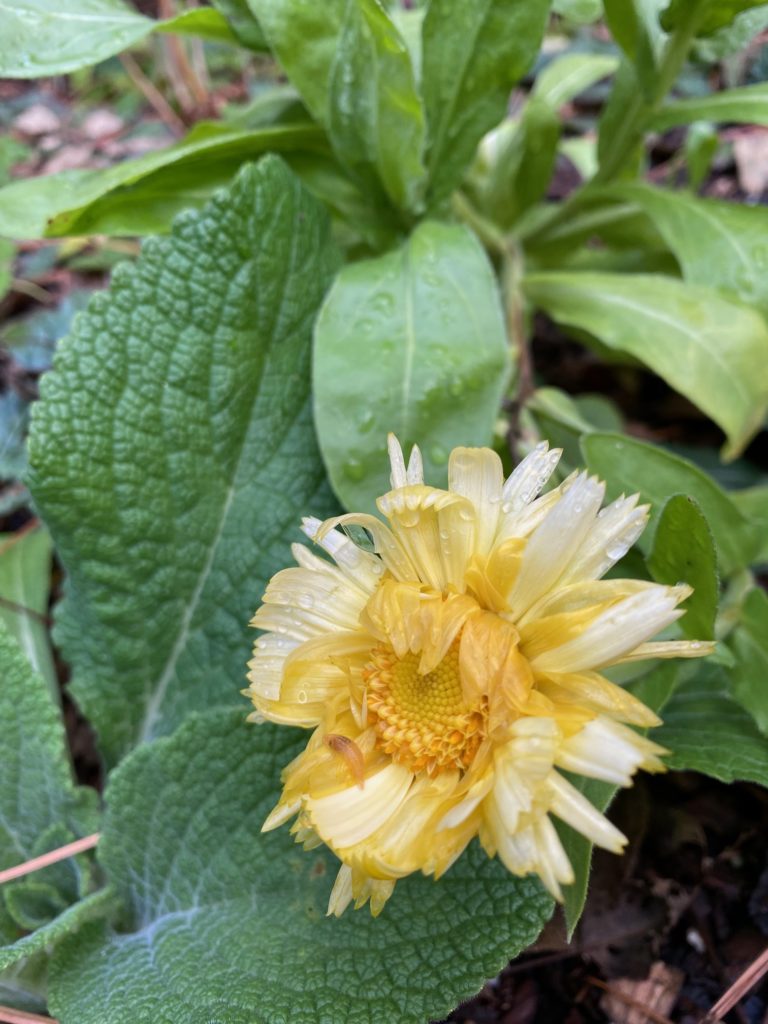
Though January can seem like a bleak month, there are some bright spots in the winter garden. I check on my bed of Lenten roses every few days, some of which are already blooming cheerfully along with a few patches of snowdrops. There are a few plants that have refused to go dormant, among them a buddleia (butterfly bush) called ‘Orange Scepter’ that I planted last spring. She refuses to stop growing and seems oblivious to frost. The temperatures this week may change all that.
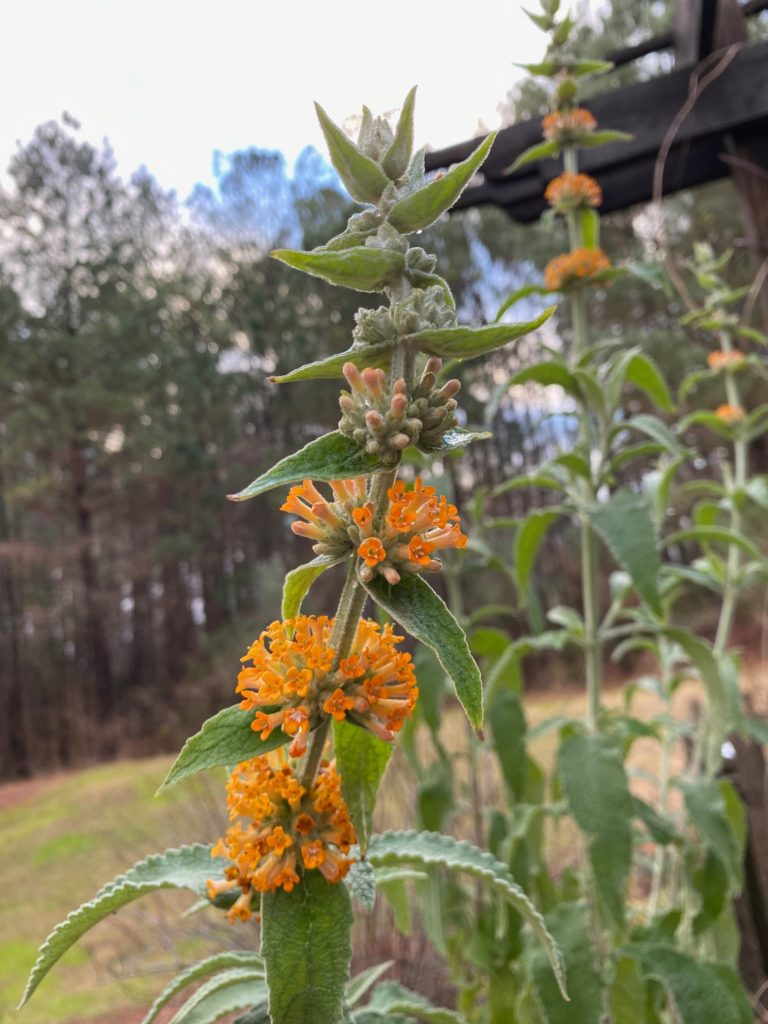
While it’s perfectly okay to forget about your garden until spring, here are a couple of things you can do if you’re tired of watching netflix and baking cookies.
If you should find yourself standing at the seed section of a garden center, pick up a packet of sweet peas. I usually plant them in December, but I just got around to putting them in ground a few weeks ago. They are ridiculously easy and can be planted anytime this month if you live in zones 7, 8, or 9. Plant each seed one inch deep and when they emerge, cover them gently with a bit of pine straw (not bark mulch) to give them a bit of protection from our coldest nights. There is no advantage to starting them indoors in Southern planting zones, so if you’ve never grown them before you might give them a try. I enjoy the blooms until summer heat sets in, and once they start to decline I compost them.
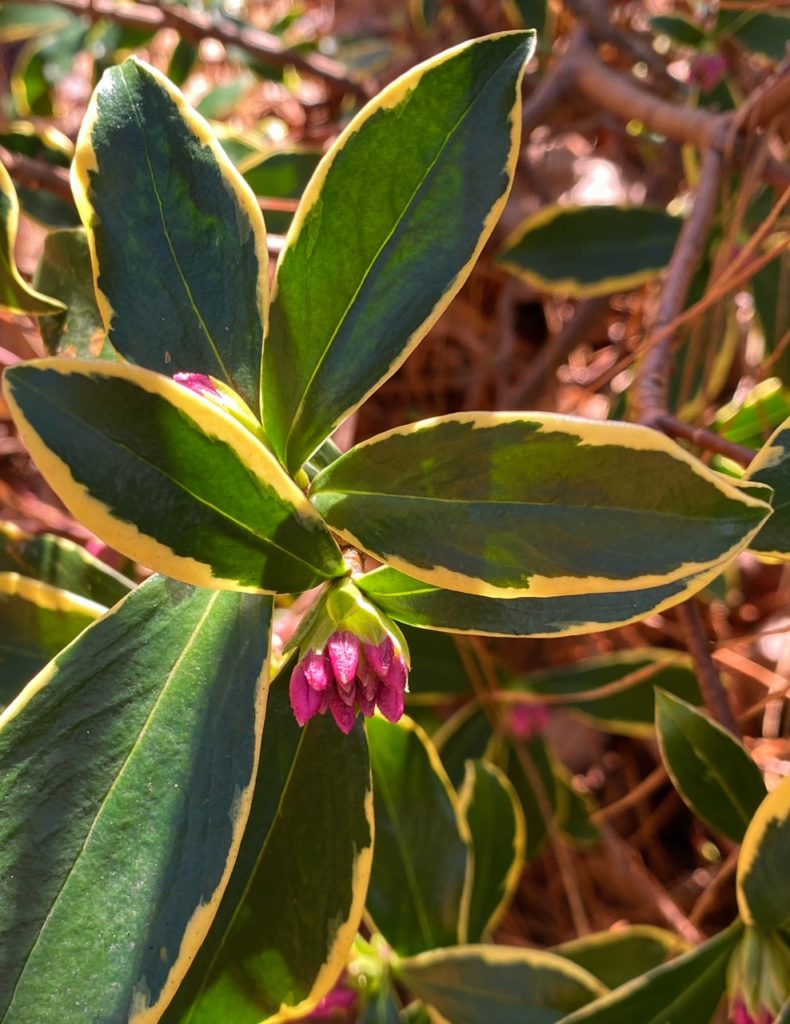
If you’ve never done any winter sowing, and have some seed packets lying around, give it a try. The idea is that you plant seeds in a covered container which you prepare with drainage holes, and you leave it outside, so that when temperature and day length is just right, the seeds will germinate and the seedlings will remain safely inside in the mini greenhouse you’ve created. Once the last frost date has passed, the seedlings can be planted out in the garden.
You can find many YouTube videos on how to do this, so I won’t provide photos of the process here. It’s quite simple. Save a few clear plastic clamshell containers (lettuce or spinach containers). YouTube videos will likely show water jugs used as containers, but either will work just fine.
Before you plant, heat up the tip of a screwdriver (or any tool with a sharp point) with a handheld lighter and poke several holes in the top and also the bottom of the clamshell container. This will take some time, but it will work! You’re creating both drainage and ventilation holes. Now you’re ready to add potting soil. Moisten the soil before planting seeds in your container so they won’t wash to one side if they are tiny, close the cover, and place it outside.
Here in Georgia, I place my containers for winter sowing in the shade so that when we have a spell of sunny warm weather they don’t heat up too much. Rain and snow will not affect them and there is no need to move them indoors if temperatures are in the teens.
If weather warms up in March and your seedlings have sprouted, open the tops of the containers during the day to allow for good air circulation, but close them up if nighttime temps fall below 32 degrees. Once the last freeze date has passed in your area you can gently transplant your seedlings. This is a great project to do with your kids!
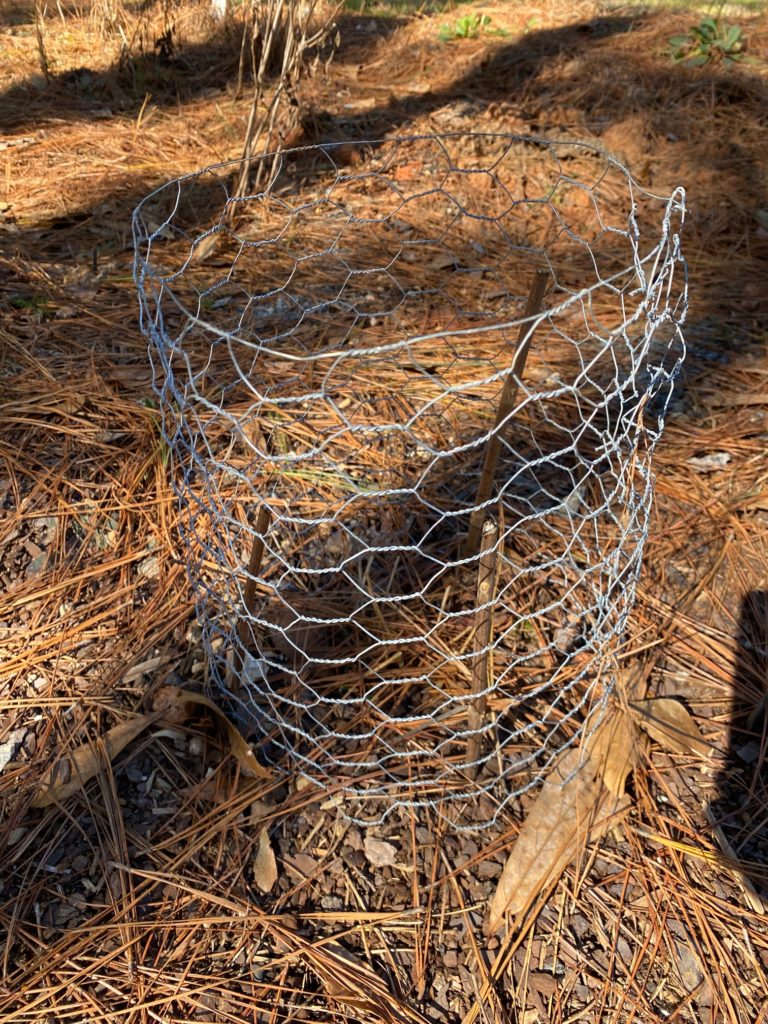
If you have deer or rabbit issues, the little wire cages shown above are a handy thing to have around. I made them from chicken wire I bought at Tractor Supply using using wire cutters. Look for rolls of small gauge chicken wire at your local hardware store or feed store. Roll out a section on the floor wearing leather gloves, if you have them, which will make the job a lot easier.
Decide how tall/wide you want your cages to be and cut the wire accordingly. I made mine about 1 1/2 ft. tall and 1 1/2 ft. in diameter, but you can adjust the size according to what you wish to protect. I keep a variety of sizes in my shed so that I can protect expensive plants from rabbits, which are a problem for me sometimes in summer. After you’ve cut your wire, seal the raw edges together by twisting the wire together in each row. (This is where leather gloves are helpful.)
When you place them in the garden, you can use thin bamboo or just garden sticks to secure the hoops in place if you wish. (I’ve done this in the photo above.)
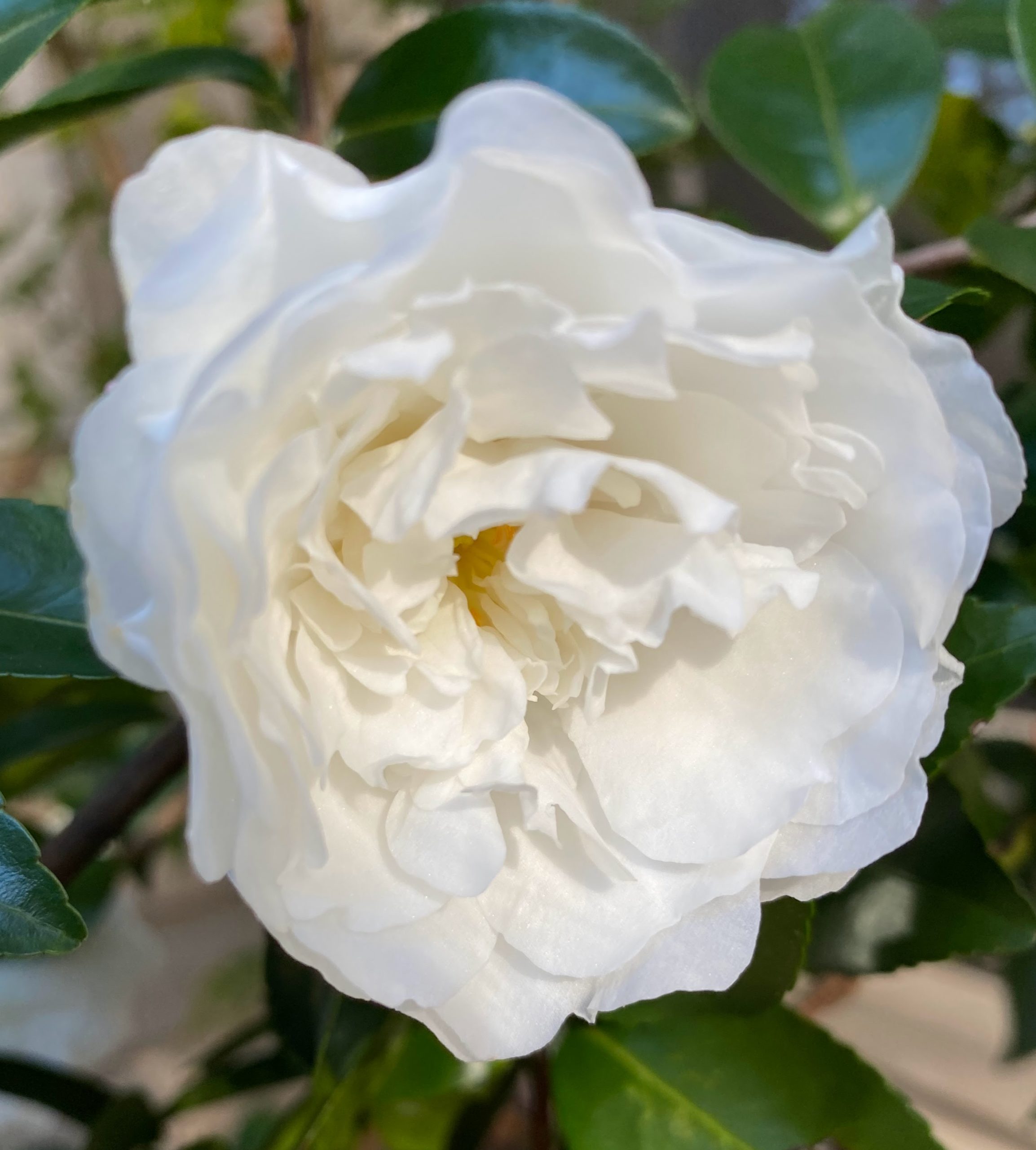
I hope you’ll find peace in the quiet of winter.